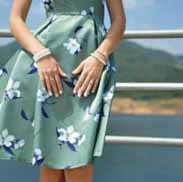Elements Of Art Flashcards, test questions and answers
Discover flashcards, test exam answers, and assignments to help you learn more about Elements Of Art and other subjects. Don’t miss the chance to use them for more effective college education. Use our database of questions and answers on Elements Of Art and get quick solutions for your test.
What is Elements Of Art?
The Elements of Art are the building blocks used by artists to create a work of art. These elements, when combined skillfully, can produce an aesthetically pleasing and emotionally powerful composition. The seven elements of art are line, shape, form, space, texture, value and color. Line is an element of art defined by a point moving in space. Lines can be horizontal, vertical or diagonal; straight or curved; thick or thin. Lines can be used to suggest shape in a drawing or painting as well as movement and depth in a work of art. Shape is an element of art that refers to the area defined by the lines drawn on paper or canvas. Shapes can be geometric such as squares and circles; they can also be organic such as free-form shapes found in nature like leaves and flowers. Shapes are two-dimensional but can appear three-dimensional if shading is used to give them volume and dimensionality. Form is an element of art that refers to three-dimensional objects having length, width and depth such as cubes and spheres. Form gives objects volume which creates visual interest for viewers who experience it from different angles depending on their location relative to the object’s position within a composition’s frame/space/background setting/scene etc. Forms may also create shadows which further deepen visual interest for viewers as well as provide another layer/element within a composition – shadowing itself being one more aspect of form explorationability with regard to adding feeling/atmosphere/mood etcto artwork compositions. Space is an element of art that refers both to negative (the empty spaces between things) and positive (the areas occupied by shapes) elements within an artwork composition’s frame size context (height x width). Space helps organize the other elements into meaningful relationships while also creating depth using perspective techniques such as overlapping forms at various distances away from the viewer’s eye level plane (horizon line). As with form explorationability considerationation possibilities – so too does space exploration ability offer up many opportunities for enhancing feeling/atmosphere/mood etc..in artwork compositions. Texture is an element of art referring to how things feel when touched or seen close up rather than from afar e.g., smooth versus rough surfaces.









